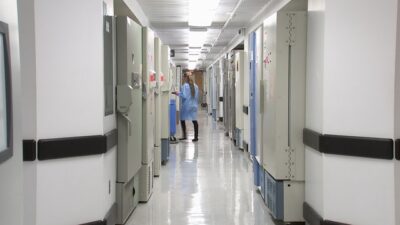Healthcare facilities should always prepare for unexpected emergencies, including power outages. We tend to focus more on extreme weather, fires, and biomedical hazards when it comes to emergency preparedness, but power outages remain all too common in the healthcare industry. In case you haven’t noticed, the healthcare industry is quickly going digital, which means more devices and machines will need to be hooked up to the grid to function.
If a power outage should occur, doctors, nurses and care providers will need to be prepared for unusual working conditions. Some devices and monitors may not work at all during a blackout, forcing providers to make do with what little they have.
Over the last few years, we’ve seen several high-profile outages within the healthcare industry. During the summer of 2019, Mount Sinai Hospital West in New York City endured a crippling five-hour blackout. Administrators were able to get several backup diesel-powered generators working, helping the facility avoid the worst-case scenario. We’ve also seen similar incidents in Hawaii, New Jersey, and suburban Seattle.
In 2017, 36.7 million Americans were affected by 3,526 reported power outages, according to Eaton’s Annual Blackout Tracker Report. While the number of reported incidents decreased slightly from 2016, the number of people affected by these outages has skyrocketed in recent years.
A power outage can happen to any healthcare facility. The trick is knowing how to prepare. Use these emergency preparation tips to help your colleagues prepare for a possible loss of power.
Sourcing Your Electricity
On the administrative side, it’s never a good idea to put all your eggs in one basket when it comes to hooking up to a power source. If your power source fails, your facility may lose access to key services and functions. That’s why it’s best to hook up to at least two power sources, so if one of them fails, you and your patients won’t be in the dark.
You should also have multiple backup generators onsite in case you lose access to the main power grid. Keep these generators connected, so that if one breaks down, the others can pick up the slack.
It’s also important to regularly inspect and maintain your generators. You probably don’t use this equipment very often, so don’t forget to make sure they’re working in case they become your last resort. Keep important contact information on hand, including the equipment manufacturer and your local utility company.
Establish Care Priorities
In the event of an outage, you’ll need to concentrate all available power on the most important aspects of your facility, most notably critical care patients, those undergoing or recovering from surgery, and those on life support. Certain machines and equipment need to run 24/7 or the results could be disastrous. Caring for your most sensitive patients should always be your first concern when preparing for or responding to a blackout.
Additional priorities should include:
- Making sure patients and providers can move from one area of the facility to another. If the elevators lose power, do you have another way to get your employees and patients out of the building?
- Refrigerating temperature-sensitive medicines. Make sure your refrigerators and coolers are hooked up to alternative power sources, so these medicines don’t spoil. Watch out for humidity and excess heat as well. Room-temperature medicines can go to waste if they get too hot.
- The comfort of your patients, including elderly and chronically ill patients who may respond negatively to excess cold, heat or humidity. Install backup air conditioning units and heaters to keep your patients healthy and comfortable.
- Lighting. While some lights may not be as much of a priority during an outage, providers and patients need to be able to see in the dark, or accidents may occur.
- Organization awareness and communication. You and your team should also have a way to communicate during such an event. If an emergency should occur, you should be able to check in with staff members and supervise key processes, so you can respond immediately if something goes wrong.
Identify your main priorities as a facility administrator or care provider, so you can still deliver essential care services during a blackout. If an emergency should occur, these systems should go on automatically, so you don’t interrupt vital care services.
Staff Training and Awareness
Once you’ve established a response plan, it’s time to educate your team. Everyone should know what to do in the event of a blackout, including which devices will be working and which will not. Staff members may need to adjust their approach to care during an outage, such as relying on non-digital instruments and tools.
You can also help your employees prepare for an outage by running regular outage drills in your facility. With predictive maintenance and thorough maintenance logs, you can better predict when certain machines and devices will fail, so you can prepare your team accordingly. You can periodically cut off the power and activate your emergency plan to make sure everything goes as planned. This helps you identify any potential weak spots that may put your patients at risk if a real blackout should occur.
Every facility should be prepared for a loss of electricity. Keep these tips in mind to avoid the worst-case scenario. You can also look over the FEMA Healthcare Facilities and Power Outages Report to learn more about this important issue.















